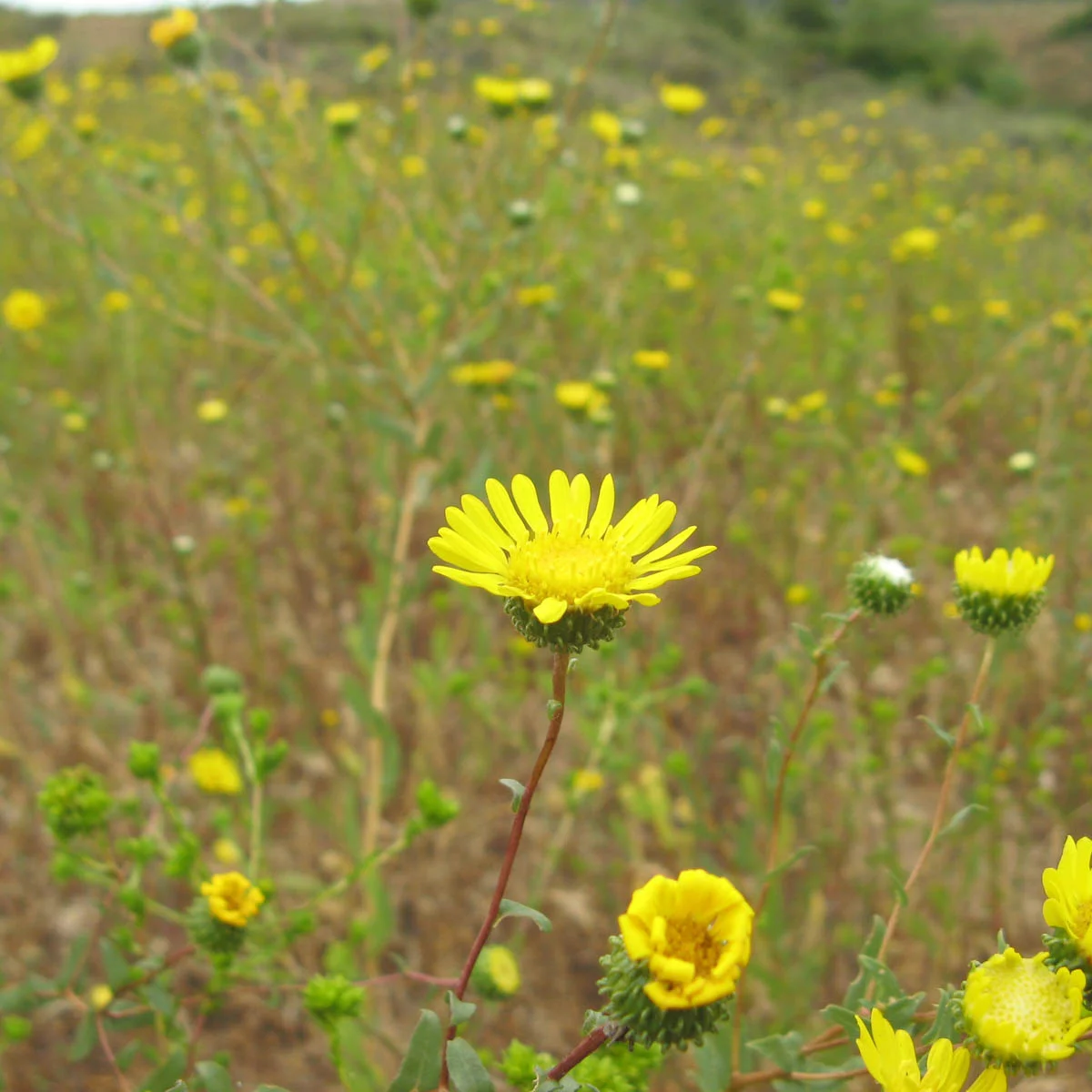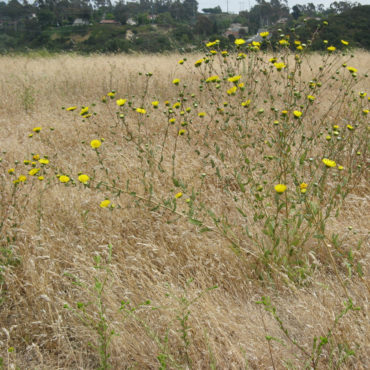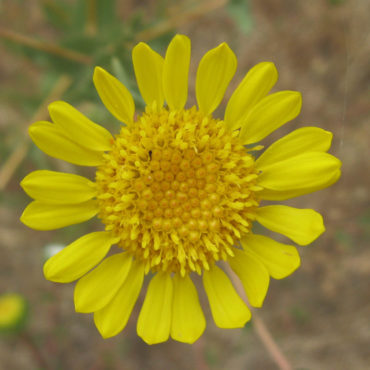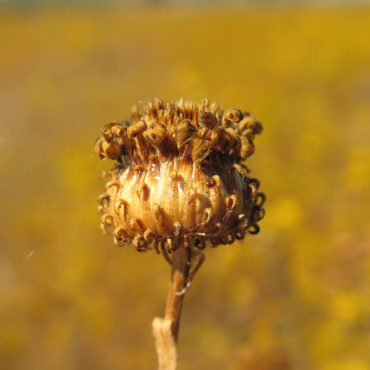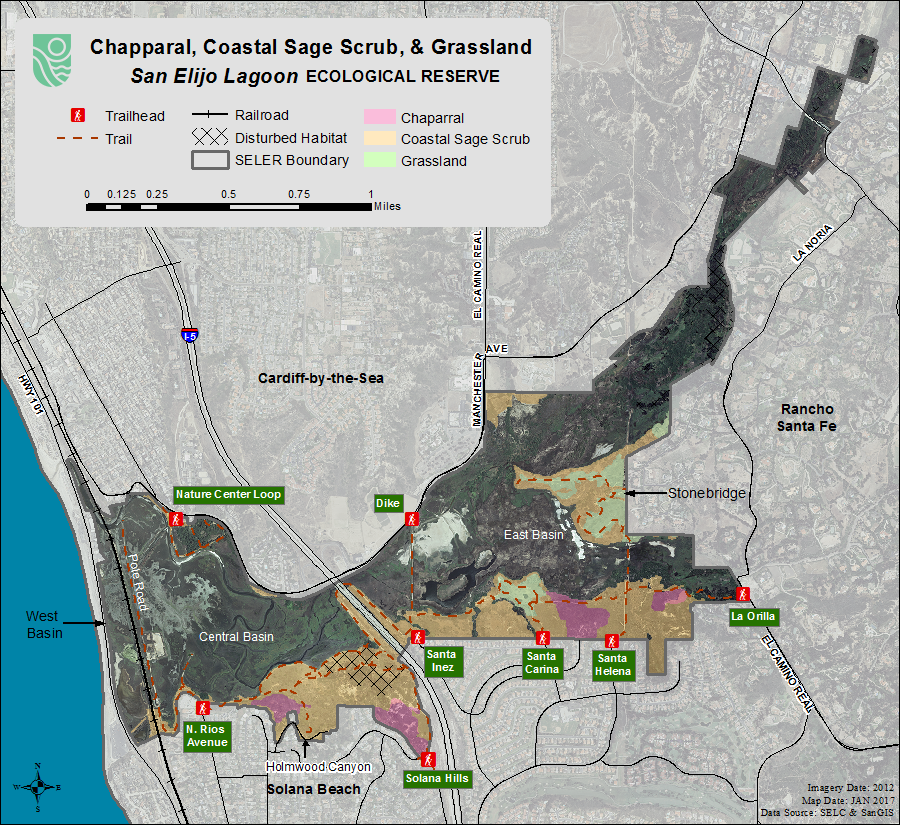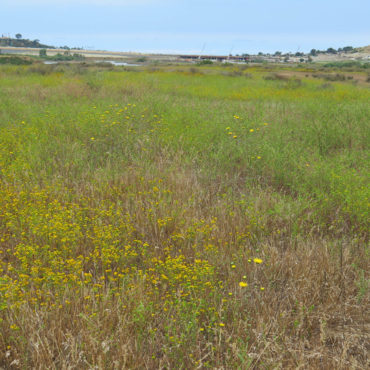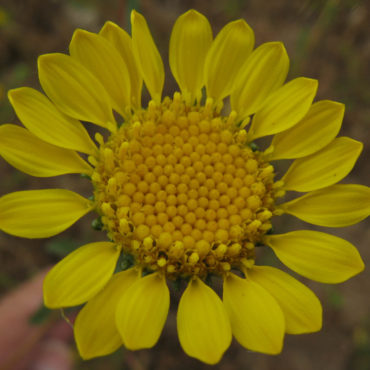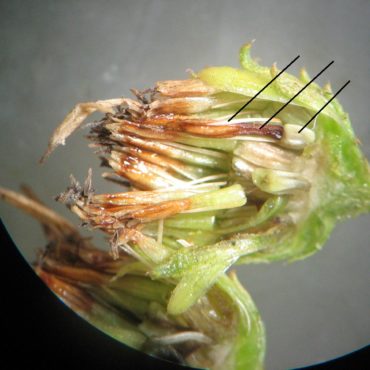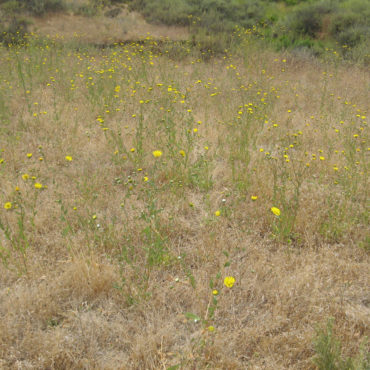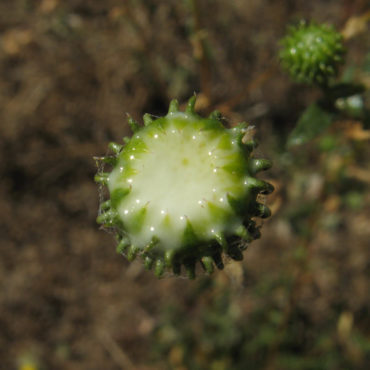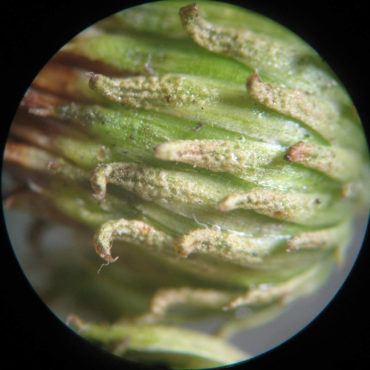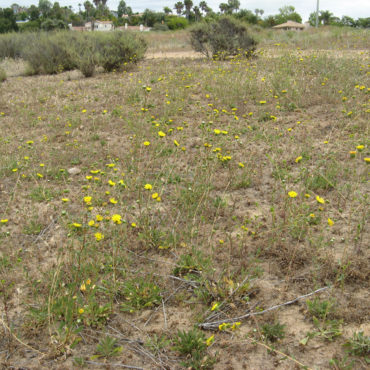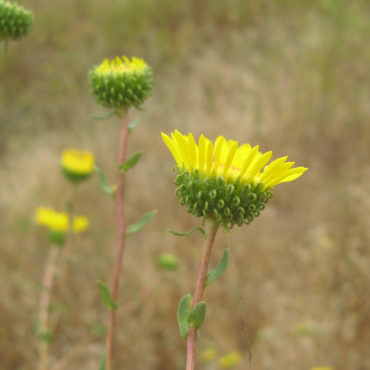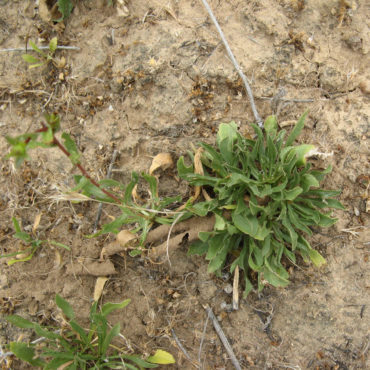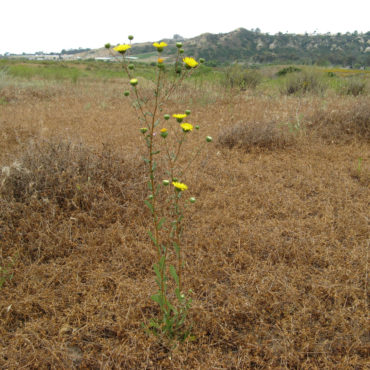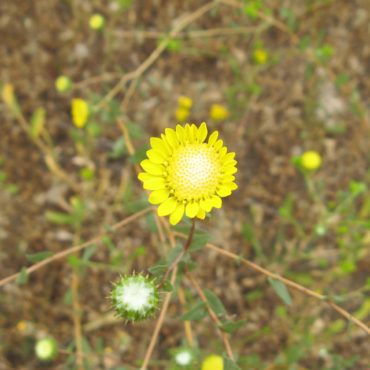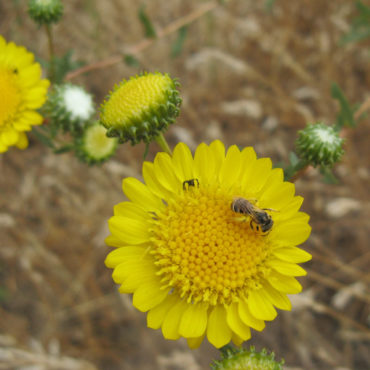Classification
Gumplant is a dicot angiosperm in the sunflower family, the Asteraceae.2 This is the largest family of vascular plants in the Northern Hemisphere.143 “Flowers” of Asteraceae are made up of one or both of two types of flowers (florets): symmetrical disk florets and strapped-shaped ray florets. These are crowded onto a common base (receptacle), and together are often assumed to be a single flower, which we call a flower head.11,44,49
There are more than 75 species of Asteraceae reported from the Reserve.48 Native species include such diverse species as sea dahlia (Leptosyne maritime), coyote brush (Baccharis pilularis), California sagebrush (Artemisia californica), yellow pincushion (Chaenactis grabriuscula), and cobwebby thistle (Circium occidentale).
The genus Grindelia is a highly variable array of ecological forms from diverse habitats over a large area in America.67 The most recent (1934) treatment of the genus established many species that botanists today regard as subspecies, varieties and local races. 67,306 Some of these are accepted by some botanists, others have been regrouped into larger taxa.
Many descriptions in the literature of G. camporum differ considerably from our plants. I have relied on the experienced botanists who have examined our Reserve plants and determined them to be G. camporum. This taxonomy follows the current generic treatment by Jepson7 (our accepted authority) but differs from that of Flora of North America306 which unites 30 of our more distinct local populations that have been described at a species or intraspecific rank (including G. camporum) into one variable species, G. hirsutula.
Jepson eFlora Taxon Page

